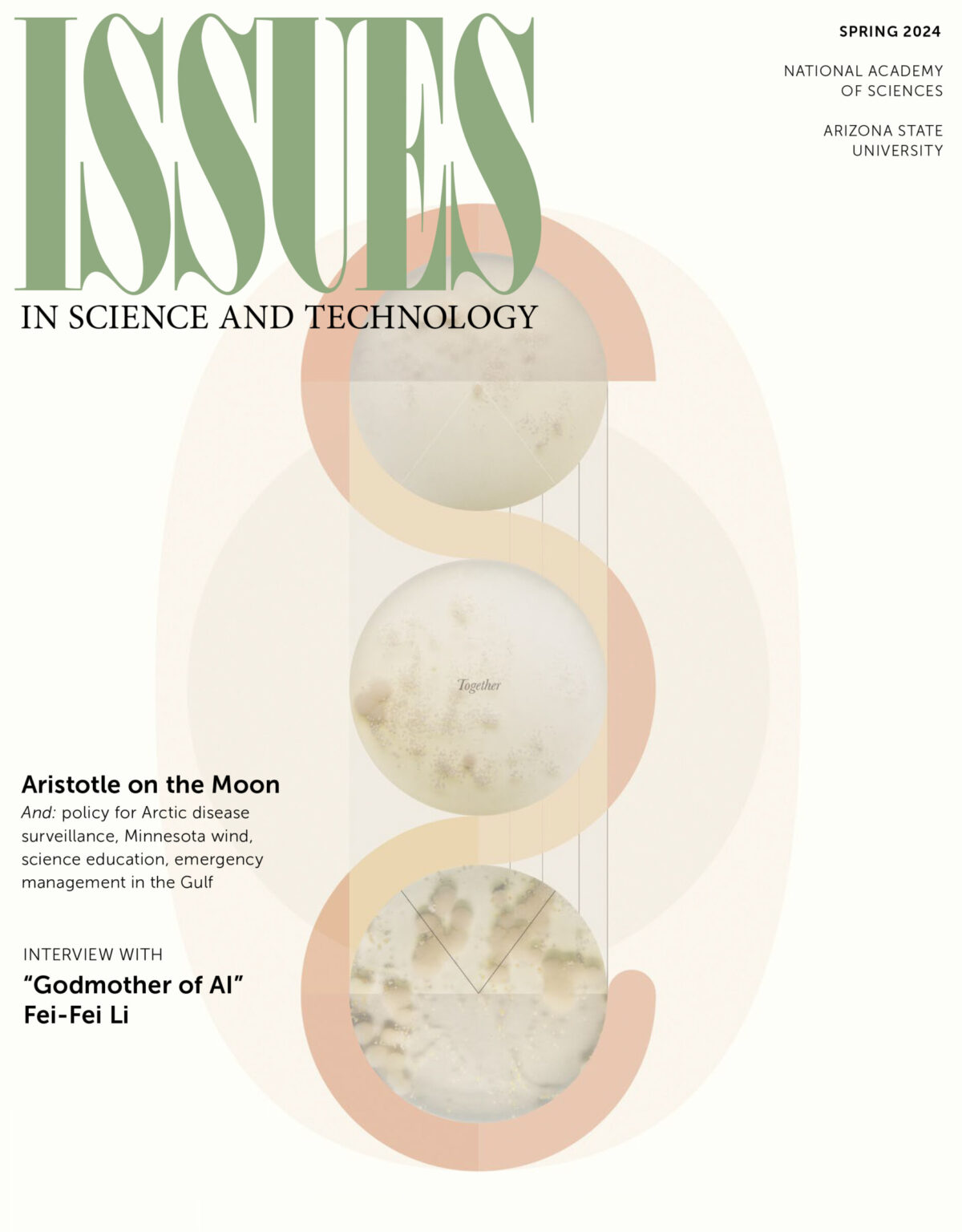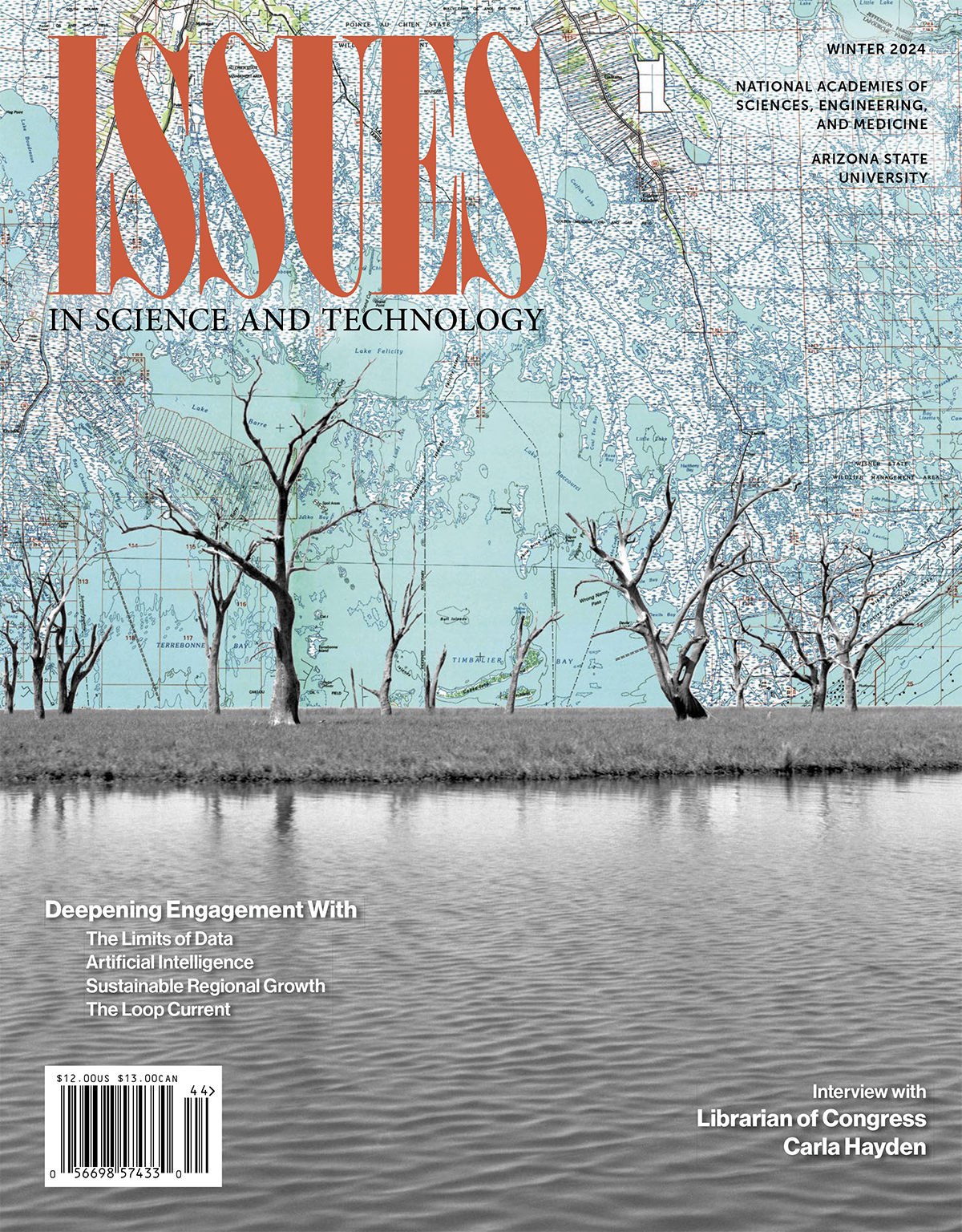The latest
Gallery

Out of Site: Survey Science and the Hidden West
Artists explore visual technologies to revise our understanding of remote Western lands that are both within and without modern society.
Read MoreThe Ongoing Transformation

Minimizing Cannabis’s Harms to Public Health
Mycoses

Foiling the Growing Threat of Fungal Pathogens
Climate change, changing migration patterns, and our agriculture system have created a perfect environment for fungal pathogens to thrive.
Read MoreThe Shuttle Program

Attempting a Democratic Technology
John M. Logsdon reviews Amy Paige Kaminsky’s book about the development of and justification for NASA’s space shuttle program.
Read MoreSTEM Education

Nurturing Deeper Ways of Knowing in Science
Efforts to diversify representation in science and engineering require initiatives that increase diversity of thought as well.
Read MoreFuture Tense Fiction

Mothering the Bay
When a busy BART train suddenly screeches to a stop deep under the San Francisco Bay, passengers turn to personalized AI agents to understand what’s happened—but they begin to realize that those agents may obscure more than they illuminate.
Read MoreJoin the Conversation
Social Media
Follow us on X, Facebook, LinkedIn, and Instagram.
Podcast
Listen to The Ongoing Transformation for conversations with today’s most exciting thinkers.
See EpisodesForum
In response to essays published in Issues, our readers weigh in on critical topics in policy related to science, technology, and society.
Send a ResponseCurrent Issue
The New Currency of Power
Winter 2025
Science and technology have often come to policymakers’ rescue when the United States was worried about threats to national security or competitiveness—think of the US response to Sputnik, or more recently, the CHIPS and Science Act after the COVID-19 pandemic. But industry, not government, is now the biggest funder of scientific research and technological development. How can the country coordinate this vast and unwieldy conglomerate in order to maintain its global preeminence? Fortunately, the scientific enterprise has been continually reinventing itself for decades, and essays in the Winter 2025 issue document this process and consider what insights we might glean for the future.
Browse the Issue

For faster access to our full journal and to see the beautiful artwork that accompanies our feature essays, subscribe to the print edition today.
The Future of Nuclear Power
The US Department of Energy and big tech companies such as Google and Amazon have announced their support for the development of advanced nuclear reactors. Do their efforts prefigure a nuclear renaissance? And what would such a renewal of the nuclear sector mean for society?
Nuclear Innovation

An Ambidextrous Approach to Nuclear Energy Innovation
Engineering Education

Educating Engineers for a New Nuclear Age
Decentralized Nuclear?

Can Nuclear Power Go Local?
Nuclear Waste

Deep Time: The End of an Engagement
News
Connecting today’s headlines with deeper policy analyses from the Issues archives.
Explore Issues By Topic
- Agriculture and Food
- Artificial Intelligence and Machine Learning
- Biological Technology
- Climate
- Defense and National Security
- Digital Landscape
- Diversity, Equity, and Inclusion
- Education
- Energy
- Engineering and Infrastructure
- Environment
- Ethics, Values, and Philosophy
- Global Affairs
- Innovation Policy
- Medicine
- Public Health
- Research Conduct
- Science and Society
- Science Politics
- Space
- Transportation
- Workforce














